
Taken at Jaguar of Tacoma, and no, it is not a new Jaguar. Can you name EXACTLY what car it is?
goolsbee.org, serving useless content from an undisclosed location since 1997

Taken at Jaguar of Tacoma, and no, it is not a new Jaguar. Can you name EXACTLY what car it is?
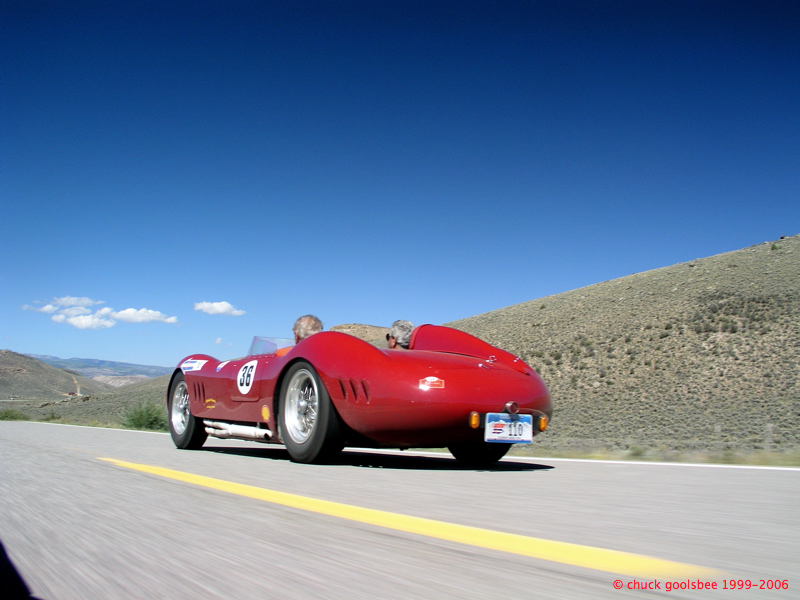
Sorry dear readers, I have been remiss! The “CPotD” and “Name That Car” features have been absent of late. Work cranked into overdrive and I’ve been distracted. Besides, it is summer so every spare moment is spent driving the old Jaguar. (I’m off to a JCNA Slalom in BC tomorrow!)
Anyway, the shot of Jerry Nell’s S3 E-type Jaguar reminded me of this shot from a few years before. Can you name the car?
Note: If you knew Jerry, please add to this memoriam by commenting. Feel free to share your “Jerry Stories” too. If you don’t want to login or create an account here send me an email “cg at goolsbee dot org” and I’ll add it in for you. I know a lot of folks in the Jaguar community and GTTSR “family” knew Jerry far better than I and can do a better job at memorializing him.
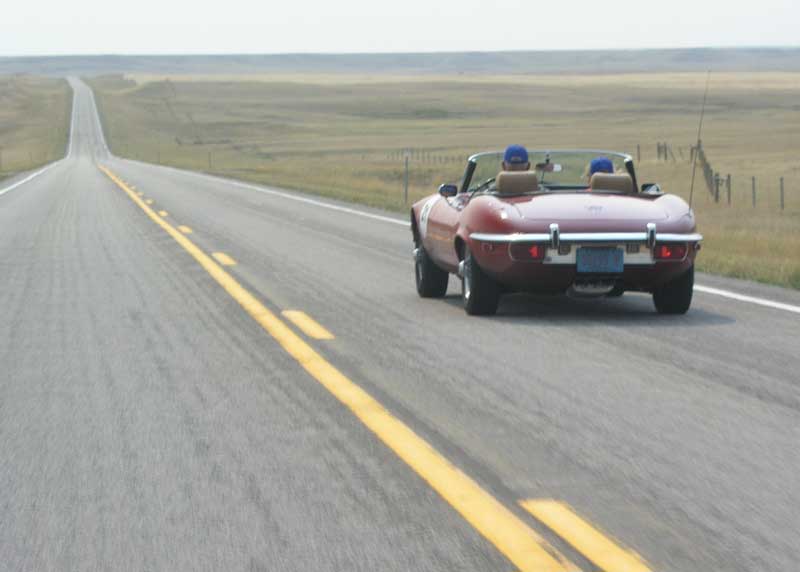
I always have a hard time explaining to people what I do for a living. It is an esoteric industry that has existed only for the past 15 years. When people ask I say “we operate an Internet server colocation facility”… and they look at me with a blank stare. In my more flippant moments, I say “We transform electricity into bits, on a very large scale“… only real computer geeks get that joke. But if you were to compare the Internet to a big old Ocean Liner of old, I’m basically one of those poor saps way down in the bowels of the big elegant beast shoveling coal into the boilers. I’m only saying this as an introduction because I was deep into the activity of coal shoveling yesterday when Shaun Redmond interrupted me to suggest I write this post. I was in the datacenter, taking measurements on some high-voltage equipment as part of a large-scale assessment project I am working on; I logged into AIM on the DC Admin workstation, literally just to call for one of our staff to come into the datacenter to be with my when I re-installed a panel cover (since there was a slight risk of electrocution, this sort of thing should always be done in pairs for safety reasons… in other words if suddenly I started getting cooked by a full 480V three-phase contact they could knock me off the gear with a fiberglass ladder… not really to save me, so much as to maintain uptime for the connected servers… again a joke that I bet only a few people get… ) Anyway Shaun popped up on AIM and said to me: “I know what you should do… write a tribute to Jerry Nell on your blog.”
I had passed the news to Shaun earlier, that I had heard through Jag-Lovers that Jerry had lost his battle with cancer and passed away earlier this week. Shaun was my traveling companion for last year’s Going To The Sun Rally. Shaun had no idea how busy I was at that moment, nor how distracting it was for him to be making suggestions for what I do in my spare time. But, here it is at 5 AM the next morning and I woke up to realize Shaun was right, I should write something about Jerry. I can’t really write a “tribute” to Jerry Nell, as I did not know him well enough to do that justice… I only spent a few moments over two weeks of his life with him. However, those moments stand in stark contrast to everything I’ve said above… those moments were in the context of a passion that Jerry and I both shared: driving old Jaguars. I have no idea what Jerry did for a living. (And he looked at me with a blank stare when I told him what I did for a living!) As much as we define ourselves by what we do, in a lot of ways it is irrelevant… we should be remembered for what we loved to do. Jerry obviously loved Jaguars, and loved to drive them. He was the sort of guy who loved to pull your leg, and press his – down on the accelerator.
Jerry always reminded me that I was there to have fun. Last year Shaun & I pulled in a little late to the the GTTSR’s “welcome” in Helena. Shaun and I had just driven the E-type for two days to get to the rally (“I don’t trailer cars, I DRIVE them!”) and both the Jaguar & I were hot, dirty, bug-splattered, and tired. Shaun was checking us into the hotel and I was under the Jaguar’s bonnet trying to sort out some fiddly little issue. Jerry was sitting on a bench just across the way from me, enjoying a smoke break on a nice late summers’ eve. I hadn’t even noticed him since I was focused on the car. He said something very Jerry-like such as: “Hey kid, get your head out from under that bonnet and get inside and socialize with everyone else!” Any other “car guy” would have asked what I was doing or how the car was running, but not Jerry. He was reminding me of what was important. The car obviously got me there from a thousand miles away… whatever was the issue, it could wait. Jerry was right of course. The car was fine, I needed a beer. 🙂
I looked through all my photos from the two GTTSR’s I shared with Jerry Nell, looking to see if I had any photos of him to put here. I only found a couple of shots where he was easily spotted. I don’t usually take pictures of people… I prefer to shoot cars. However I did find this shot from the The Lodge at Whitefish Lake, taken at the end of the first day of the 2007 GTTSR. At first I thought it wasn’t very good; it is shot into the sun, it is grainy, and the composition and lighting don’t really show Jerry that well.
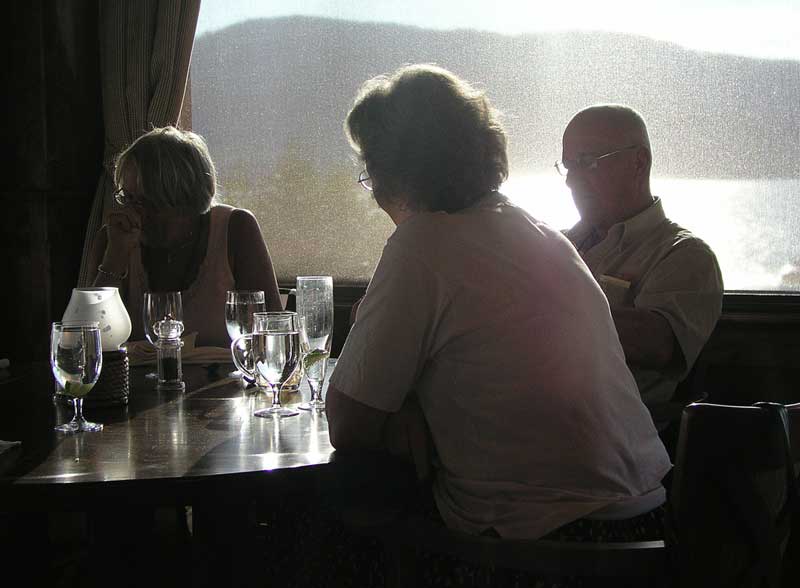
But now that I have looked at it for a while I realize it actually captures Jerry’s essence perfectly! I don’t recall the circumstances that lead up to this moment but looking at it I can imagine it. Jerry is on the right, on the far left is his wife Kathy, and in the foreground with her back to us is Francoise Reyns. It appears as if both Kathy & Francoise are laughing… Kathy is even hiding her face in embarrassment. Jerry looks calm however… as if he’s just delivered some outrageous comment and now is letting it lie there and sink into his audience. If you knew Jerry, you know that scenario is quite likely correct.
The best “Jerry Story” I have was from the last day of the 2007 GTTSR. This was the magical morning I spent with Philippe Reyns in his Jaguar XKSS. he invited me for a ride, which I leapt at the chance to accept. Francoise rode with Shaun in the 65E, I hope enjoying the relative comfort, peace and quiet compared to the raucous and outrageous XKSS. Jerry & Kathy had brought their XKSS as well, but on the second day, it suffered what the rally mechanics thought was a blown head gasket. Despite their heroic efforts, including an all-nighter and trailer-run to Calgary, they could not get it running again. I do not recall the final diagnosis, but the engine required a rebuild. Making the best of a bad situation Jerry rented a car, and he and Kathy stuck with the rally. That was a tribute to Jerry’s optimism and sense of fun. Most other folks would just bail out, but Jerry was there to enjoy himself, and stuck to the plan.
On this last day I was making the most of my time in the Reyns’ XKSS. To me it was a magical experience, and I was conflicted between just sitting there and soaking it all in, and properly documenting it with some photography. Photography for me is a passion – It is the only way I can tap into that creative streak that I spent half my life dedicated to, but abandoned as life and family pressed me into more financially stable pursuits. When I compose photos, I have to concentrate on the task. So there I was, concentrating on taking the perfect shot of the XKSS’ curvaceous bonnet, and to my left appears a car passing us! It shakes me from my focus. First of all, the XKSS is FAST, and Philippe is a veteran race car driver… nothing has passed us yet! In fact we’ve passed everything in sight… so what on earth could posses this Subaru Forester of all things to pass this rare and treasured machine?
Jerry Nell of course!
As the Subaru settled back into the lane, a car length or so off the nose of the Jaguar, Philippe and I leaned our heads close together to speak (the only way you can communicate amid the outrageous mechanical clamor that is a Jaguar XKSS at speed!) and we simultaneously said only one word:
“Jerry!”
We both smiled, as it was a truly comical moment.
Jerry had ruined my photography session, since you can’t really compose a beautiful shot of an XKSS bonnet with a Subaru Forester as your background! But for this I owe Jerry a debt of gratitude, because for those minutes that Jerry’s rental Subaru prevented me from composing photos I was able to turn off my desire to shoot and its required need for concentration, and really focus on the experience of being there in that amazing car. To close my eyes and listen. To feel the tingling in my spine in resonance to the exhaust note. To soak it all in. It was truly a once-in-a-lifetime experience and much like his reminder to me a few nights before to quit worrying about the E-type and go have a beer, Jerry was instrumental in reminding me of that – allowing me to imprint this experience in my memory. Thanks Jerry.
Not long after the GTTSR ended I received an email from the Reyns’ telling me about Jerry’s diagnosis. The outlook was not good and honestly we knew we’d lose him soon. I can not imagine what these past months were like for Jerry & Kathy. I spoke to Francoise Reyns the day I heard that Jerry had passed away. She said that she & Philippe are going to Jerry’s funeral. I told her to extend my condolences. I don’t have much more to say, but I do have a selection of photos of the two Jaguars that Jerry & Kathy brought to Montana for the 2006 & 2007 GTTSR. I’ll miss seeing him and what car he’d bring next at this year’s rally.
What a great guy. Good bye Jerry.
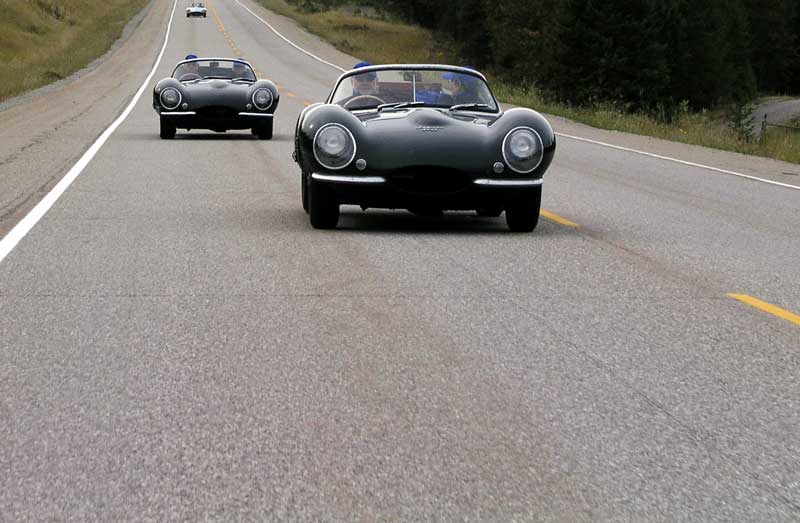
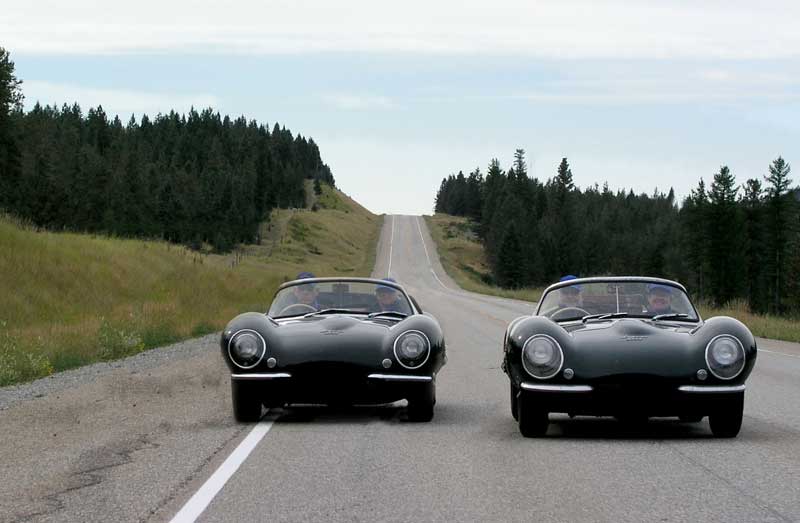
Above: The two XKSS’ together on the road. When I showed this to Jerry he said ‘I was never that close to Philippe!’ which is true… I edited the photo to put the cars closer together. He chuckled at that and slapped me on the back.
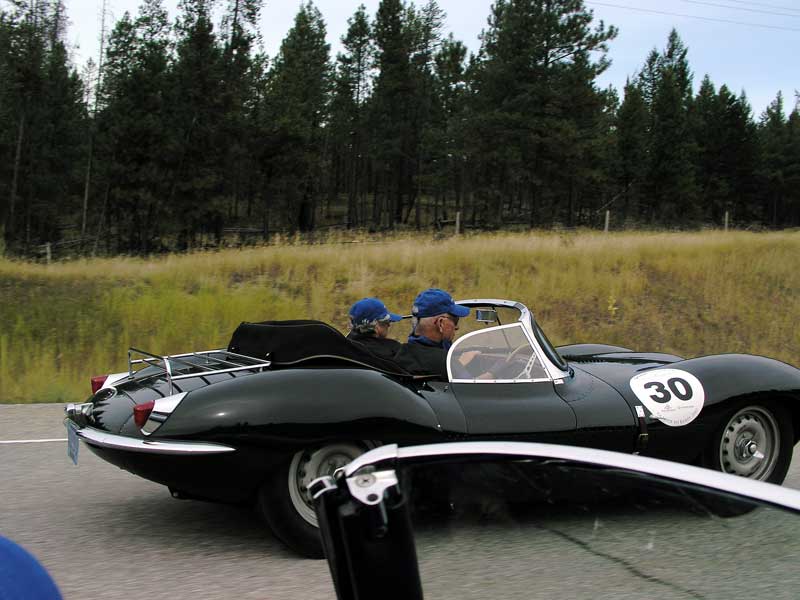
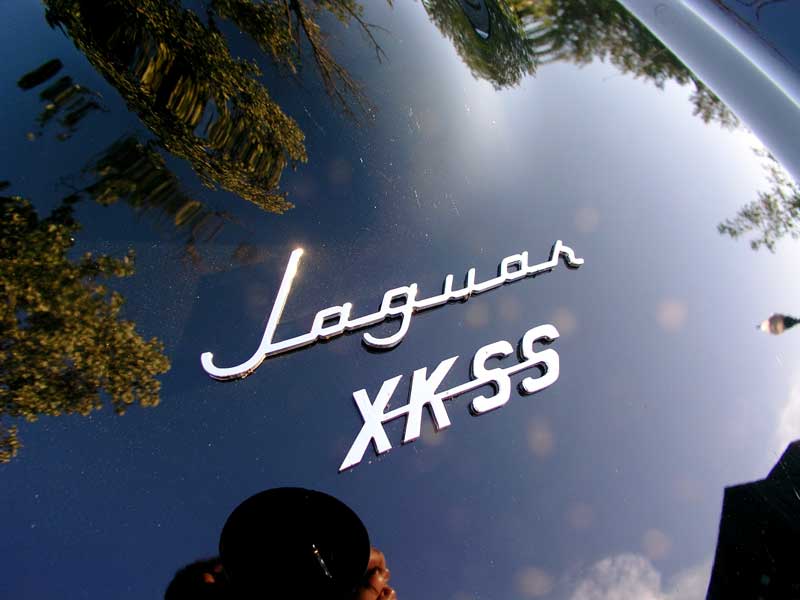
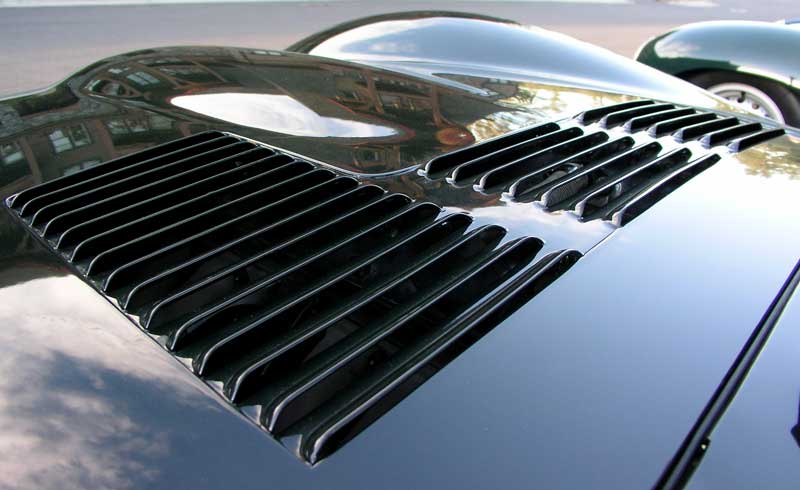
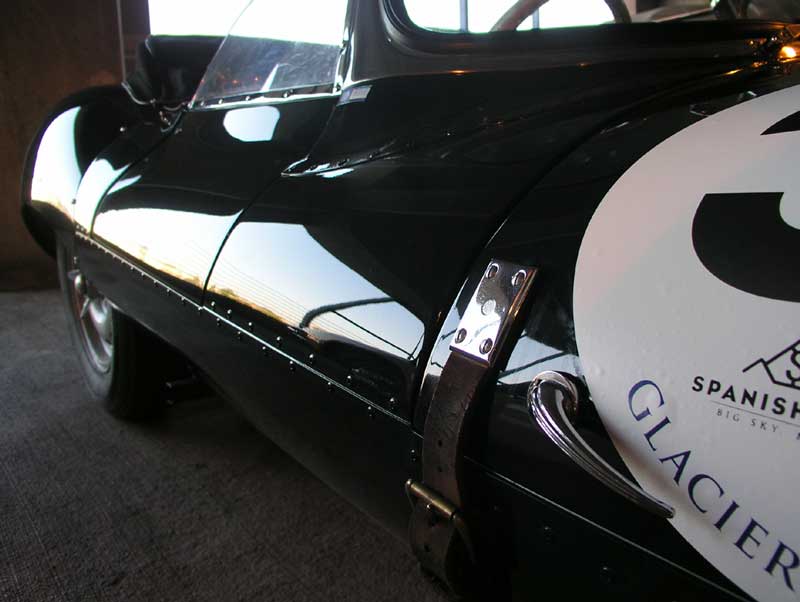
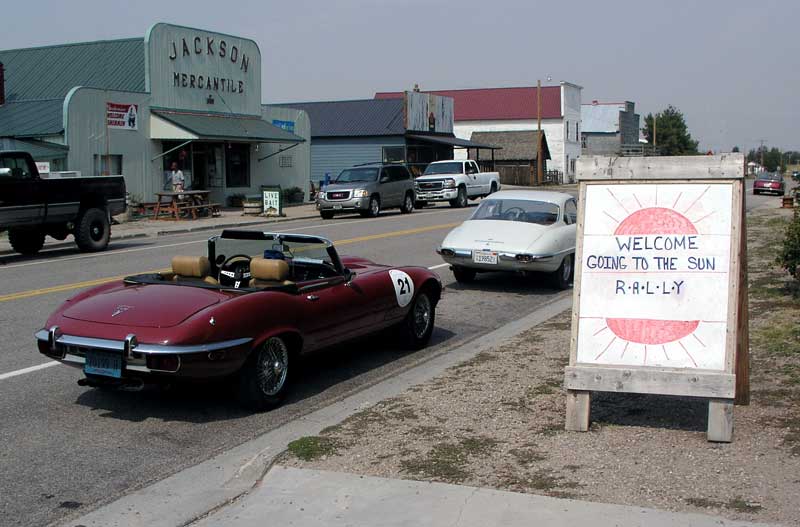
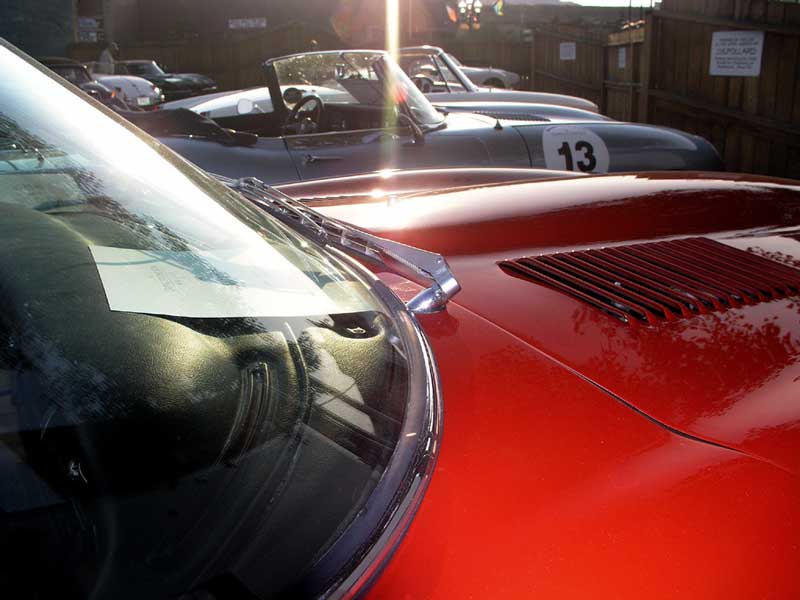
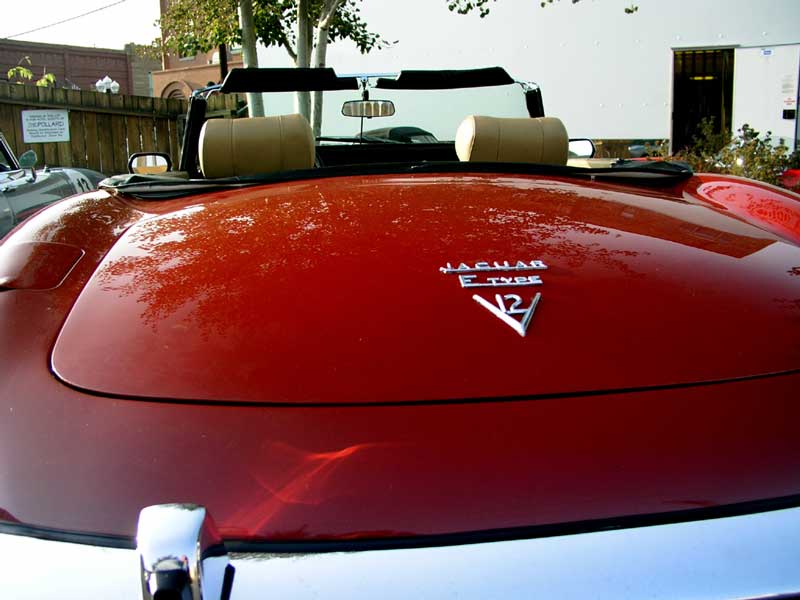
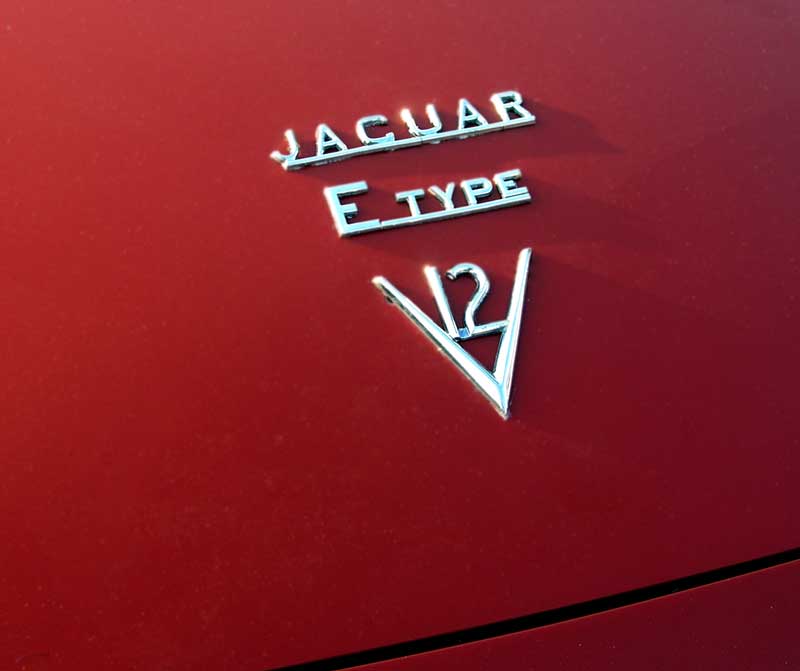
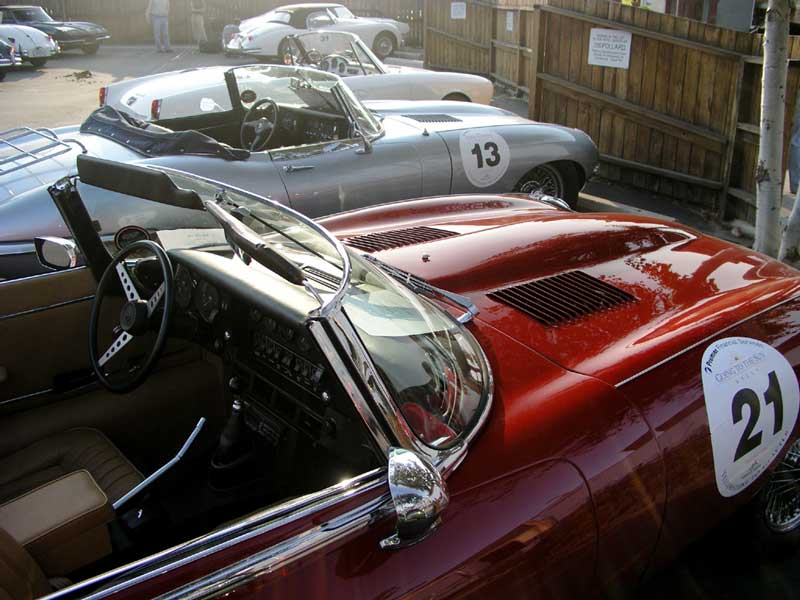
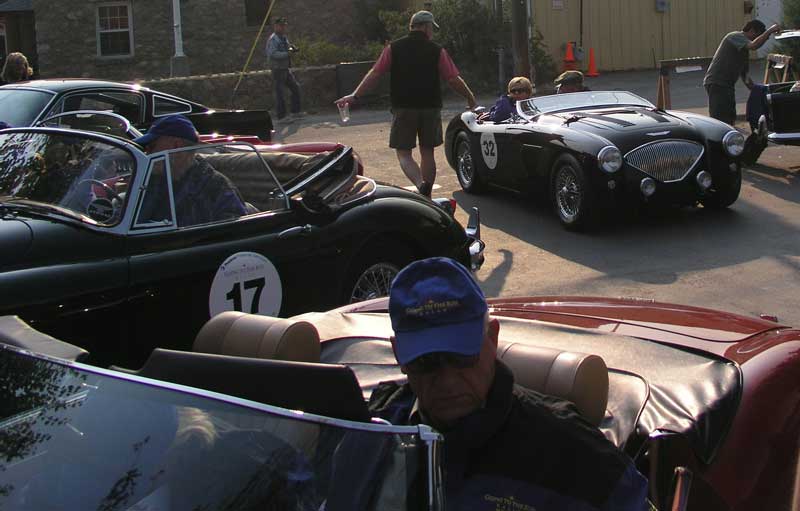
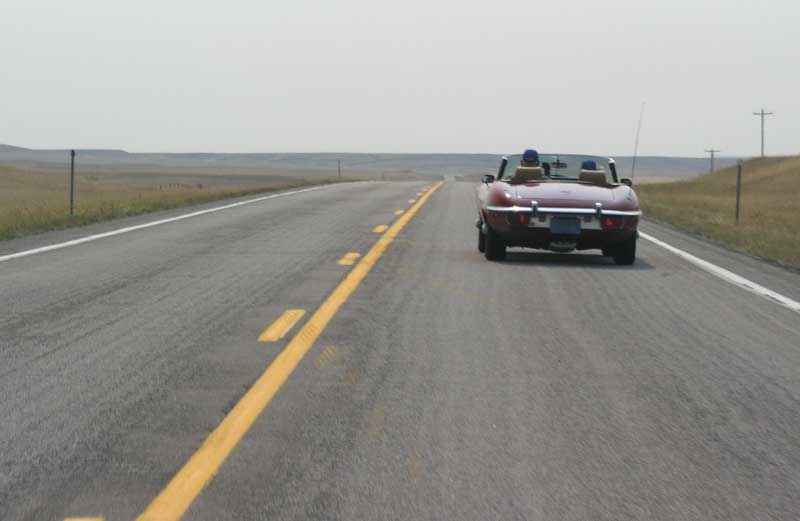
Good bye Jerry.

I’ve spoken here before about HOW to communicate in an IT disaster. Today I’m going to illustrate the opposite situation.
First of all, the Internet Cheerleaders aka “The Blogosphere” all seem to get hung up on the concept of “community”. This idea that somehow everyone will hold hands on top of the mountain and sing in harmony, provided the Internet is used as a free and open exchange of ideas. The echo chamberer, circle jerk… um blogosphere seems to forget that real communities operate under a set of rules and have a subset of the community that enforces those rules, carries out mediation and if required, punishment, to promote and keep civil order. While very few people I know are as libertarian as I am, I still recognize the need for the occasional exercise of the power of the state to maintain the community. I’m not so naive to think that if all the rules were lifted that we’d all just get along peachy. Self-interest is the prime human motivator and everyone seeks to improve their advantages in life. It isn’t just human nature, it IS NATURE. So when it comes to setting up communications channels with your “community” of customers, it pays to remember the lessons of society and nature.
There are three ways to view communications between service provider and customer (or IT Dept and Users, or Company and Clients, or however you wish to define this relationship):
The Blogtards (thank you John Welch for that term!) want you to think that option three is the One True Way. Open and honest communication! Unfettered and free. Sorry, but that is complete BS. Chaos and disorder is what it really is.
I experienced this second-hand today and it was an epiphany for me. We rent some rackspace in a facility in Vancouver, BC. We came to this position when we acquired a smaller competitor in 2002. They had a private suite in this facility and we maintained it for a year or so until some circumstances forced us to relocate the majority of our equipment down to our main facility in Seattle. We left behind a handful of servers, namely things that require geographical redundancy… secondary mail, DNS, offsite monitoring, etc. I live halfway there so I actually go up there once or twice a year to do server maintenance and whatnot. The company we rent the space from uses a web forum to interact with their customers. So far, so good right? Like most datacenter operators they aren’t really in the real estate biz, they rent space in facilities who provide the infrastructure. (FYI: We don’t do this. We specifically construct our leases to have full control over assets like UPS and generators. But that is pretty unique in this business.)
Today, one of those freak accident/force majeure events happens. A fire in an electrical vault creates a large area power outage in the city of Vancouver. Some of the backup power systems have intermittent problems staying running.
Now, I’m not here to criticize the provider or the building management about their backup power systems right now. The post-mortems haven’t been completed, but from what little I do know now it sounds like they don’t quite have their ducks lined up properly. No, I’m here to disprove the blogtards about the wonderfulness of open communications. Their web forum as customer communications channel blew up in their faces.
If you didn’t have the stomach to wade through the whole thing, here is the entire 27 pages (as of Monday, July 14, 2008 @ 8 PM PDT) of it in a nutshell:
Provider: The power went out, a generator failed, we are working as fast as we can to fix the problem.
Customers: Oh crap…
Customers: WTF!? We pay you outrageous prices for uptime! Where’s your redundancy??!!
Provider: We’ll have more data as soon as it is available. Please be patient.
Customers: Didn’t this happen once before?? OMG! You Guys Suck!
Customers: OMG! I’m losing thousands of dollars EVERY MINUTE!!!
Customers: Don’t you test these things?? Ever??
Customer: Hey, my stuff over at (other facility) is still up!
Customers: WTF??! We’re pulling our equipment out ASAP!
Provider: Current status is X, ETA for full turneup is Y. Please be patient while we sort this out!
Customers: (Rampant speculation and worry based on uninformed observation)
Competitor Sales Staff: Hey, our stuff is still online, We’re offering discounts for new setups TODAY only!
Customers: Cool! Sign us up!
Provider: (deletes post from Competitor Sales Staff)
Customers: Hey! WTF!?? You are deleting posts! That is CENSORSHIP! You can’t do that!
Provider: We now have an ETA of X:XX for full recovery. Almost there folks, hang on!
Customers: How come the ETA just changed?? You Guys Suck!
Provider: (tries to correct rampant speculation and worry based on uninformed observation, with some facts)
Customers: You guys are lying bastards, get your story straight!
Provider: Any minute now, trust us! We’re working REALLY hard here!
Customers: How come nobody answers the phone?
Customers: Hey, what about (names company)’s servers, when will they be up?
Competitor Sales Staff: Hey, our stuff is still online, We’re offering discounts for new setups TODAY only!
Customer: hey, take it easy on them guys… they are nice people.
Competitor Sales Staff: Hey, our stuff is still online, We’re offering discounts for new setups TODAY only!
Provider: We’re partially up! Rolling starts are being conducted by NOC staff.
Provider: (deletes post from Competitor Sales Staff)
Customers: My stuff is down still!
Customers: My stuff is back up! Thanks guys!
Provider: (deletes post from Competitor Sales Staff)
Customers: My stuff is down still! I’m losing MILLIONS OF DOLLARS PER SECOND!! I expect to be compensated!
Competitor Sales Staff: Hey, our stuff is still online, We’re offering discounts for new setups TODAY only!
Provider: (deletes post from Competitor Sales Staff)
etc, etc, etc.
You will note that the provider actually did everything that they should have and could have. They were informative, open, honest and direct. The real problem was the “community” which devolved into complete chaos within minutes and kept getting worse by the second. Once the blood was in the water the sharks arrived and started picking off the survivors one by one. What a disaster.
Why have an option for anonymous contribution to a forum?
Why even have an open forum about facility status?
You can serve the same function with either of the two other methods. A straight announcement-only broadcast, or if you want to have feedback an announcement channel with a private feedback loop. No public chaos, no feeding frenzy of your competitors preying on your misfortune. No accusations or random speculation. Just focussed communication that stays on-point and useful.
There is a time and a place for an open exchange of ideas. Two way communication is valuable. Free-for-all communications even has its place. But NOT when you are dealing with a crisis.
Your thoughts?
(this is, after all a semi-open forum!) 😉

Nicholas and I were able to hop in the E-type and drive down to Kent on Sunday, July 6th and catch the last day of the 2008 Northwest Historics. We met up again with Philippe & Francoise Reyns, as well as their son Michael. They graciously allowed me to park the Jaguar in the paddock in front of their car hauler. (The Jag attracted a few admirers while there.)
After we socialized a bit Nick & I went off to see some racing, wander around the paddock, take pictures, and generally drool over cool old cars. If you are into old race cars this place is heaven… the paddock is wide open to spectators and the cars and owners are very approachable and friendly. Some of the world’s most noted car collectors are here in the Seattle area and this is the big event as far as vintage racing goes here in the Pacific Northwest.
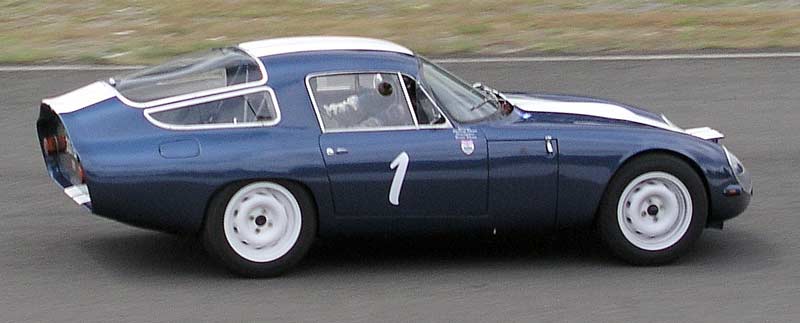
Above: I was pleasantly surprised to see this Alfa TZ2 out on the track!
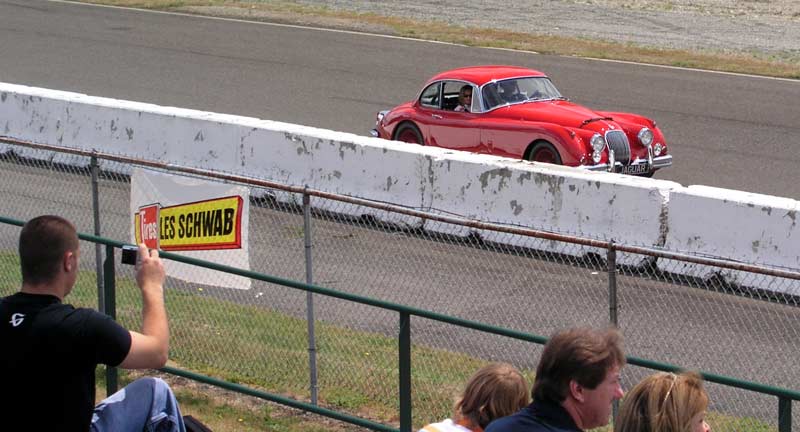
Above: A Jaguar XK 150 on the Car Corral parade lap.
We watched two heats, then the car corral parade laps, where local car clubs take their cars out of the “car corral” reserved for them along the front straight and go for a parade around the track. I thought about sneaking in… but figured it was best to sit and watch. Maybe next time.
We then went for a walk around the paddock to take photos.

Above: George Follmer’s UOP Shadow CanAm car. I saw this car run at Road America at Elkhart Lake when I was a little kid. I also met George Follmer last year on the GTTSR.. nice guy.

My heart skipped a beat when I saw this ferrari 512m. Yes, if you’ve seen the movie ‘Le Mans’, you have seen this car. Wow. This was only the beginning of amazing cars in store!

This 300sl wasn’t here to race… like the 65E somebody drove it to the track to watch the races!

Above: A paddock runabout. Note the brake!
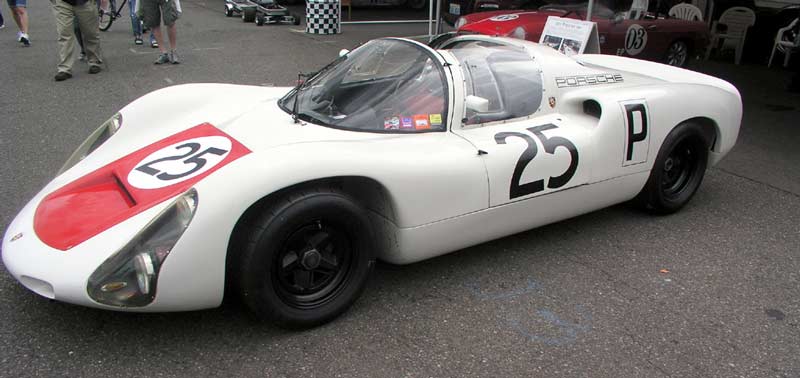
Above: I’m not a big Porschephile so I can’t tell you exactly what porker this might be. A 908 maybe?
Nick and I rounded a corner and there was that blue Alfa I liked so much!…

…and apparently it has some serious provenance…



What a beautiful car!

Above: Running into this GT40 gave me the chance to tell Nick the story of Enzo & Edsel, which is how this car came to be. But… what’s that in the background?

Above: WOW! Tazo Nuvolari’s Monoposto! What a treat to see such a notable machine. later we were treated to seeing it in action, but for now I showed Nick the amazing DOHC straight-eight, and impressive big finned drum brakes. Very cool.


…and next to it…

Another car from my childhood, one of Jackie Stewart’s elf mounts.

We headed back to the track, as we knew that Philippe would be out soon in his Lola and we wanted to be there for that. On the way we ran into this familiar sight:

We found a spot in the grandstand and watched Philippe’s heat. He was in with a fast crowd, Formula 1, Formula 5000, Can-Am and Le Mans cars.
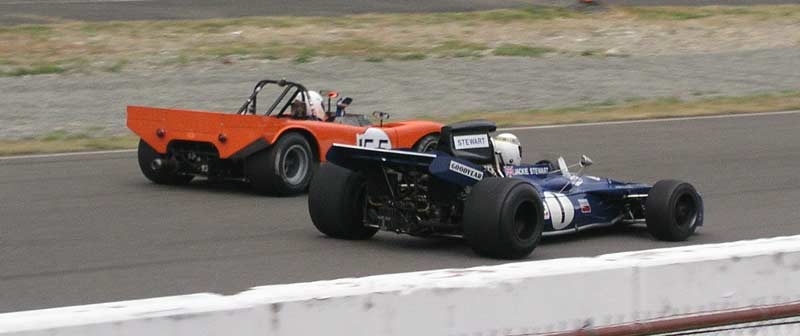
Above: Philippe waves an F1 car by on the front straight.
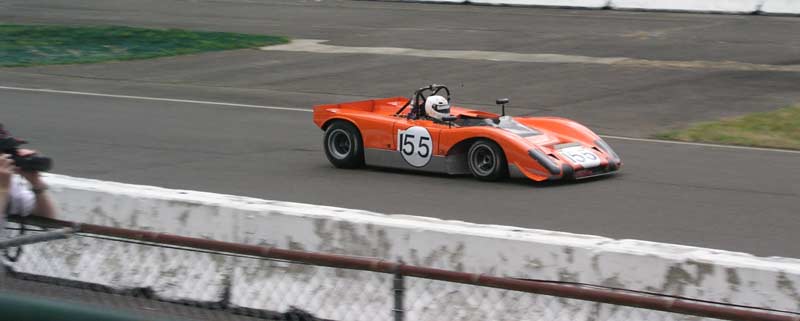
Above: Philippe Reyns’ Lola screams down the front straight at speed.

Above: That big bad Ferrari roars by.

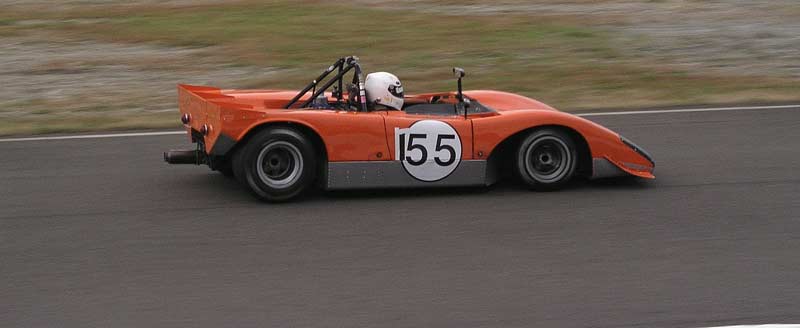
After that heat finished we went for another stroll through the paddock to see what we had missed before (old NASCAR cars were out on the track.) Nick had a sno-cone and I was treated to another star of the movie ‘Le Mans’…

We saw the rest of the paddock and stopped in to see the Reyns. Phillipe told me that we really had to cross the track and go see the back side. The front straight of Pacific Raceways is not to thrilling… the track also serves as a dragstrip, so the front straight is probably a mile long, running parallel with the dragstrip for over a quarter mile, then with a kink where it joins the drag’s long runout, before a long wide left-hander that disappears down into the woods. Philippe told us the back side is like “a little Nürbergring Nordschleife with wonderful curves through the woods and hills.”
So Nick and I wandered through the Car Corral and headed for the gate to cross the track between heats.
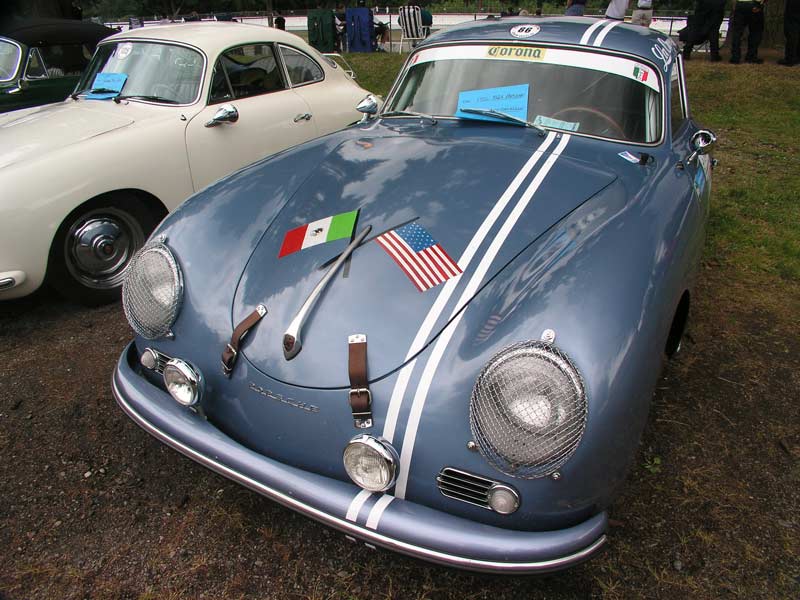
Above: Saw this porker in the car corral.
It took a while for the track to clear, it was filled with really loud Corvettes, Mustangs, and other TransAm class cars making noise. Did I mention the sound? It was deafening.
We finally made it across, and after a bit of a hike we found this:

It does sort of look a little bit like a slice of the Nordschleife doesn’t it?
We spent the rest of the event here, thrilling to all sorts of on-track action. What a great little vantage point!
The highlight was seeing and hearing that ex-Nuvolari Grand Prix Alfa Romeo Tipo P3. It had a wonderful, deep basso profundo voce.


I used my still-camera to capture footage here and there during the day, and pasted it all together into this video… enjoy!
The 4th of July is always a fun time around Arlington. One of the highlights is the parade down our main street, Olympic Avenue. Two years ago I actually participated, having been assigned the task of carrying a dignitary (which in the end didn’t work out, so I carried Nicholas!) Last year they didn’t really have a parade down Olympic, since it was all torn up being resurfaced. They had a parade, but it was elsewhere and we didn’t go.
The parade seemed to suffer a bit from this disruption, and was much smaller this year than previous years. Additionally our enjoyment of it was reduced quite a bit… let me explain.
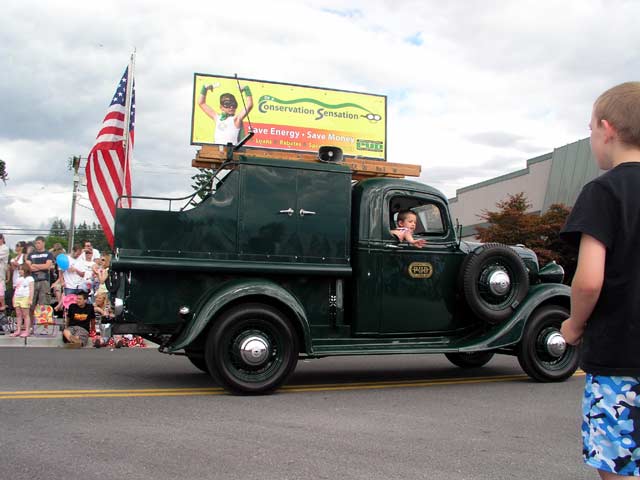
Above is a photo of an old Public Utility District truck, which always participates in the parade. Note the child on the right side of the frame.
Another tradition of the parade is that parade participants throw candy out to the curb and small children pick it up. In fact Nick and I did this from the Jaguar in 2006. When our kids were little it was their highlight. However everyone stayed seated on the curb and no views were obstructed. This year, every kid under the age of eight just stood up, about 5 feet off the curb and ran around picking up candy and screaming ‘Mine!’ like the seagulls in “Finding Nemo”. Needless to say, it sort of ruined the parade experience for me. Where are these childrens’ parents??
I was able to grab maybe three photos between dashing, screaming brats.
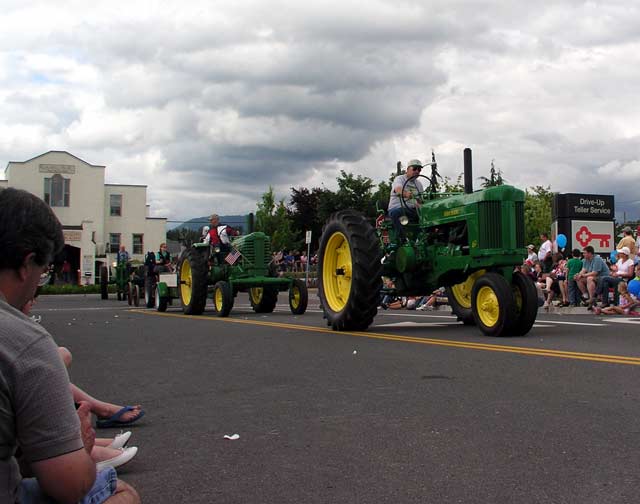
The old tractors are always a hit. This photo shows them just coming around the bend at the start of the parade. There were about 30 of them, most pre-war… but other than this photo, I only caught small glimpses of them between scurrying rugrats.
One tractor was towing a hit-and-miss engine for driving pumps. It had this fascinating water cooling systems with a mini cascading cooling tower sort of apparatus. Too bad the cavorting crumb-crunchers prevented a good photo.
This guy was my hero:
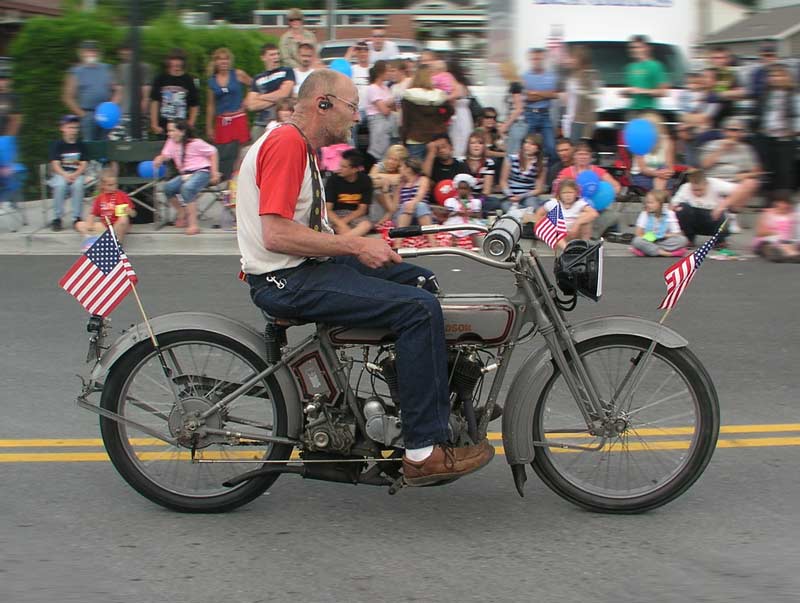
For one thing he didn’t have any candy to throw, handling that old Harley was enough! But he also had a toothless smile, and a menacing-to-children look about him so all the fearful parental units recalled their misbehaving spawn from the street when he came around. That old Harley wobbled down Olympic and the sea of little monsters parted as if he were Moses. I propose that next year he be nominated the Grand Marshall!
The bluetooth headset does sort of destroy the vintage look he’s got going though.
So I would have liked to take lots of photos of the old cars and whatnot, but instead I ended up with shots like this:
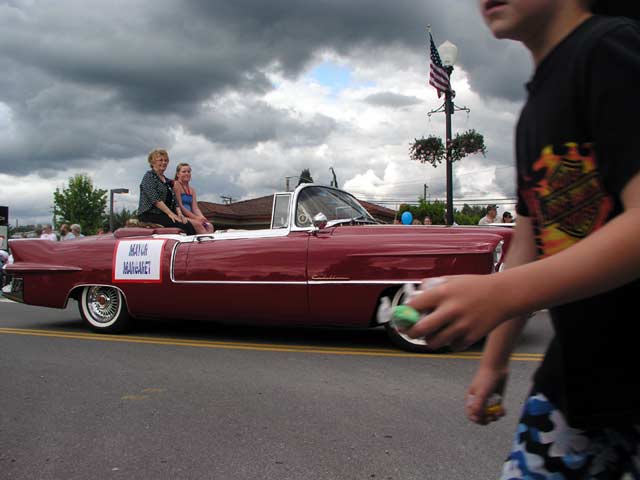
just checking my work here on my site before I link this at work…